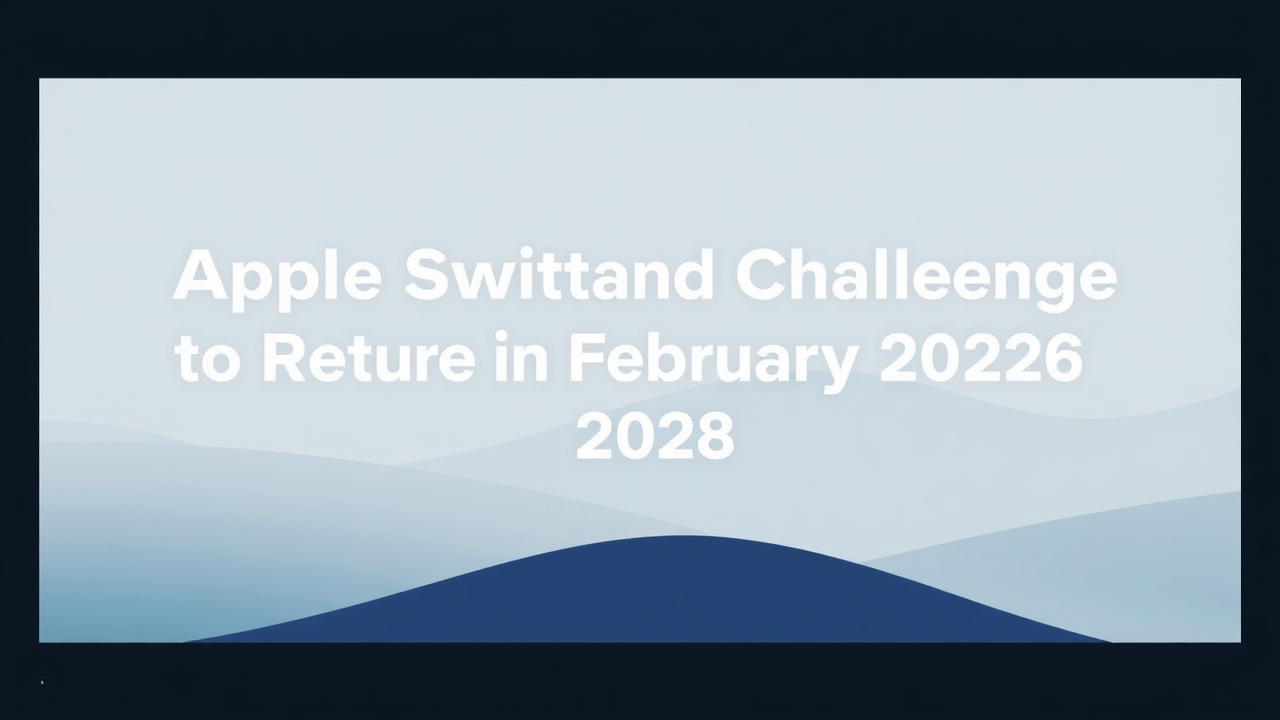Apple will restart its annual Swift Student Challenge in February 2026, giving student developers a global platform to showcase their coding skills and creativity. The competition invites young programmers to build innovative app playgrounds, with select winners receiving special recognition and opportunities at Apple's Worldwide Developers Conference (WWDC).

Challenge Dates and Application Timeline
The 2026 Swift Student Challenge will open submissions on February 6 and close on February 28. Students worldwide can participate by developing unique app projects using Apple's Xcode and Swift Playgrounds. Apple is supporting participants by offering new Develop in Swift tutorials and coding sessions to help them prepare. Applicants must be currently enrolled students or recent graduates from accredited academic institutions, with specific age requirements varying by country. The challenge encourages developers to demonstrate innovation, creativity, and potential social impact through their technological solutions.
Winner Selection and Recognition Process
Apple will carefully evaluate submissions based on creativity, technical skill, and potential societal contribution. A select group of participants will be named Distinguished Winners, receiving an exclusive invitation to Apple's Cupertino campus. These top developers will experience a three-day immersive event, typically coinciding with the annual Worldwide Developers Conference. The recognition goes beyond a simple competition, offering young technologists a unique opportunity to engage directly with Apple's ecosystem and potentially launch their future careers in software development.
Spotlight on Past Challenge Winners
Previous Swift Student Challenge participants have created remarkable applications demonstrating technological innovation. Brayden Gogis, a notable winner, developed Solisquare, a card game now available on the App Store. He subsequently created Joybox, a social media app allowing collaborative media sharing. Adrit Rao designed Signer, an impressive app using Core ML to translate sign language gestures into spoken words, promoting accessibility. Sofia Sandoval showcased creativity with Cariño, a digital card-making application developed using iPad and Apple Pencil, highlighting the versatility of Apple's development tools.
Technological Innovation and Accessibility
The Swift Student Challenge emphasizes more than just coding skills. It encourages developers to create technology that solves real-world problems and promotes inclusivity. Apps like Signer demonstrate how young programmers can leverage machine learning to break communication barriers. By providing platforms for students to explore technological solutions, Apple nurtures a generation of developers who think beyond traditional software development, focusing on creating meaningful, socially responsible technological innovations.
Learning Resources and Preparation
To support participants, Apple is expanding its educational resources. The company offers comprehensive Develop in Swift tutorials and Meet with Apple coding sessions designed to help students enhance their programming skills. These resources cover various aspects of app development, from basic coding principles to advanced techniques in Swift programming. By providing structured learning paths, Apple ensures that students, regardless of their current skill level, have the opportunity to improve their technological capabilities and prepare effectively for the challenge.
Global Participation and Diversity
The Swift Student Challenge represents a global platform that transcends geographical boundaries. Students from different countries, educational backgrounds, and skill levels can participate, creating a diverse and inclusive technological community. Apple's eligibility criteria are designed to be accessible, allowing recent graduates and current students to showcase their potential. This approach not only discovers emerging talent but also encourages young developers from various cultural and educational contexts to engage with cutting-edge technological development.
Impact on Student Developer Ecosystem
By hosting this annual challenge, Apple plays a crucial role in nurturing the next generation of software developers. The competition provides more than just a chance to win; it offers exposure, learning opportunities, and potential career pathways. Winners like Brayden Gogis and Adrit Rao demonstrate how such platforms can transform student projects into real-world applications. The Swift Student Challenge effectively bridges academic learning with professional technological innovation, inspiring students to view programming as a powerful tool for creating meaningful solutions.
Future of Student-Driven Technology
The 2026 Swift Student Challenge symbolizes the continuous evolution of technology education. By encouraging students to experiment, innovate, and solve complex problems through coding, Apple contributes to developing a more dynamic and responsive technological landscape. The challenge highlights how young developers can leverage tools like Swift and machine learning to create applications that address social, educational, and accessibility challenges. As technology continues to advance, platforms like this will play an increasingly important role in shaping future technological innovations.
Source: Link
